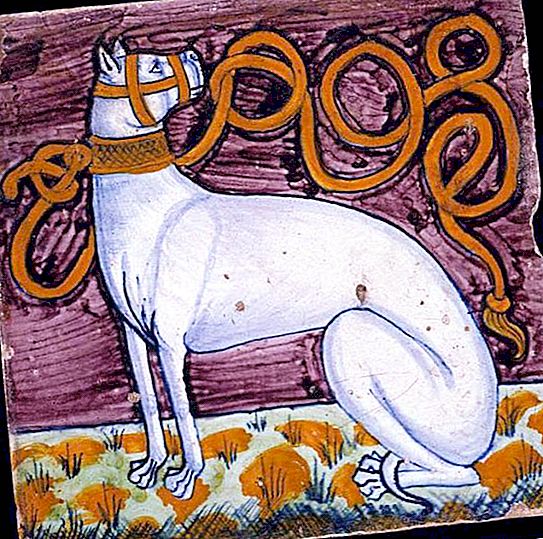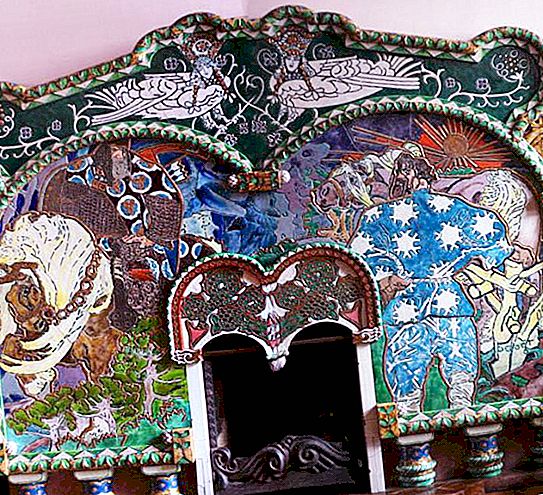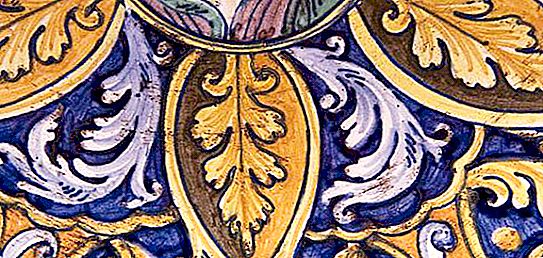Glossy glazed surface, bright colors - all this is majolica. What it is? The answer is in the article.
Majolica - what is it?
Not all ceramics can be called majolica, but only made according to a certain technology.
The technique of majolica implies that colored porous clay is used for the ceramic product. The clay product is covered, or, as experts say, doused with special white enamel and painted with opaque paints. Therefore, such products have another name - pouring ceramics.
Homeland of Majolica
Although the name of pouring ceramics refers us to the island of Mallorca or Mallorca, in fact, ceramics with a glazed surface began to be created much earlier - in ancient Egypt. Products made of porous colored clay were coated with paints containing various metal oxides and burned. Majolica bricks were used to decorate the palaces, but with the fall of the kingdom of Egypt, art was lost for centuries.
Rebirth majolica
In the XI-XII centuries, Spanish travelers, returning from Asia, brought wonderful pottery, not like the one produced at home. Bright colors, glossy surface attracted the eye. However, the majolica received its heyday only in the hands of Italian masters, to whom it fell in the XI century.
The Italians named this type of pottery in honor of the Spanish-Moorish island of Mallorca, with whom the Genoese traded and fought.
Spanish-Moorish ceramics did not at all resemble the majolica we know today. It was rough, made of thick clay, painted with careless strokes of poor quality alkaline glaze. It was Italy that became the real homeland of exquisite majolica products.
Italian products
The Italians did not immediately understand what it is - majolica.
At first they did this:
- poured the clay product entirely with liquid white clay, adding tin oxide to it;
- burned;
- covered with a colorful pattern, using simple ornaments from crosses or stars.
This technology will later be called semi-majolica. The paint on products made by this method was fragile, and the ceramics themselves looked rude.
But already in the XIII-XIV centuries, Italian majolica becomes sophisticated and elegant, reaching its peak in the 17th century and spreading from the Apennine Peninsula to all of Europe. In Italy, ceramics of this type were produced in more than a hundred cities, including Derut, Siena, Caltagir, Urbino, Faenza, Cafagiolo, Casteldurant. By the way, it was Faenza who gave the new word - faience.
Majolica - what is it in Renaissance Italy? Products were famous for grace and subtlety of work.

For ceramics, only soft colored clay was used. The finished product was covered with an opaque white glaze, which included tin.
The pattern was applied with blue cobalt, so the Renaissance majolica is designed in blue and green.
All masters tried to find their own style, came up with their own technology for applying the image. In the drawings used ornaments from heraldic symbols, painted portraits and figures of animals, often recreated oriental ornaments.
The finished ceramic product was covered with a colorless transparent glaze containing alkali, and fired. Thanks to this, the paints became softer, warmer, and the product itself is more durable.
Application
Majolica - what is it, what kind of ceramic products are performed in this technique?
Even Italian masters mastered plastic ceramic forms, creating sculptures and decorative compositions.
In this technique, tiles for stoves, walls and furniture decor, platbands, elements of facade decor, dishes, panels, sculptures can be made.
Majolica - characteristic differences
Ceramic products made using the majolica technique always have a number of common features:
- product shapes are smooth, rounded;
- background is either white or opaque;
- colors are bright, contrasting;
- the main gamma is yellow-brown and blue-green;
- patterns are often plant;
- glossy glazed surface.
Knowing the above signs, it is easy to understand what majolica is. This will distinguish it from other ceramics.
Technological process
What is majolica? This is not just a burnt clay product. To answer the question you should understand the subtleties of the process.
Initially, Italians covered the cobbled product with white paint, which included tin, and then applied a pattern of paints with the addition of lead. During firing, tin and lead were melted, forming a bright and durable surface.
Nowadays, 2 types of production of ceramic majolica are used:
- First, the product undergoes firing at a temperature of 750 about, after which it is covered with white enamel, on top of which glazed paints are applied. Then follows another firing during the day already at a temperature of 1000 about.
- The old method is also used when glazed paints are applied to a raw clay product. When fired, the paints are baked, forming a shiny glaze. The peculiarity and complexity of this type of majolica production is that ceramics get color only after firing.
Features of the manufacture of Russian majolica
Majolica appeared on the domestic expanses during the time of Peter I, when the Dutch and Italians brought samples of irrigated ceramic products.
Having adopted a foreign skill, they quickly learned to make majolica in Moscow, Gzhel and Yaroslavl; this was facilitated by the presence of large deposits of red clay in the vicinity of the city.
Russian masters had to experiment, achieving strength and beauty of ceramic samples. The technological process took place in 2 stages:
- The product is molded from clay, painted, covered with the first layer of glaze with the addition of tin.
- Then the product is fired once more, before that it is covered with glaze with lead to give the ceramics shine.
Already in the XVIII century, the fashion for majolica went beyond Yaroslavl, reaching St. Petersburg. Majolica tiles adorn the facades of houses, revetment furnaces and doorways. Pouring ceramics is used even when decorating churches. Almost in every house there is a beautiful ceramic tableware, vases and figurines.

In the 19th century, Art Nouveau style is unthinkable without exquisite shades of glossy majolica. Such outstanding Russian painters as V.M. worked in majolica technique. Vasnetsov, M.A. Vrubel, S.V. Malyutin, who created unique examples of arts and crafts. In St. Petersburg, many buildings have been preserved, decorated with majolica tiles, including the Cathedral Mosque.






